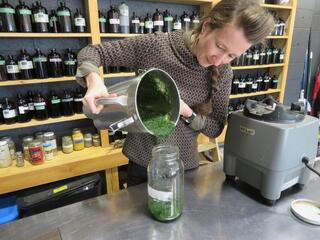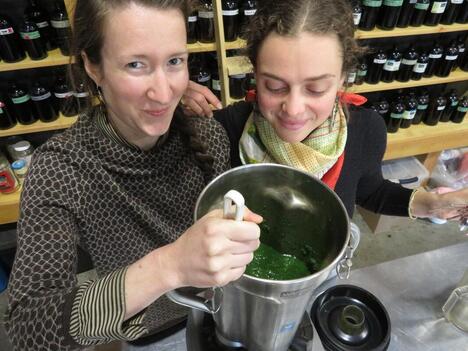 How to make herbal tinctures ("folk method"): 1. Gather your herb. 2. Fill it loosely into a jar with a screw top (i.e. mason jar). 3. Pour alcohol over your herb until it covers the herb about 1/2'' or so. For dry herbs use 40-50% alcohol (80-100 proof), for fresh herbs use 60-95% alcohol (120-190 proof). Plants with a high water content (i.e. fresh roots) should use the higher alcohol percent (i.e. 95%). Vodka or grain alcohol are good choices because of their neutral flavor. 3.5. Optional step - blend the alcohol and herb together to increase surface area exposure for the herb. 4. Place the jar away from light (i.e. in a cupboard), in a cool, dry location for 4-6 weeks. 5. Shake or stir the tincture every day if possible. 6. If after a day or two the plant material expanded and is no longer submerged in the alcohol you may need to add more alcohol. Especially look for this with dry roots and fruits (may need to cover them with 1-2'' or more alcohol from the beginning). 7. After 4-6 weeks strain out the herbal material and store your tincture for use! That's it!  It's possible to get much more detailed with your tincture-making, but the above method will work pretty well for most herbs. If you want to be more precise, you can measure the weight of the herbs and the volume of the "menstrum" (alcohol). You can also look up a recipe to find an "herb:menstrum" ratio for the plant you're working with. For example, an recipe might say to tincture a fresh plant at "1:2, 80%," which means for every 1 part of plant material by weight (grams or ounces), use 2 parts of menstrum by volume (milliliters or fluid ounces), using 80% alcohol. With more potent herbs it's best to be precise and follow a specific recipe in order to take a more precise dose of the final product. For most mild herbs, there is a great deal of room for experimentation and error - herbs like peppermint or chamomile have a wide therapeutic dose range, so it doesn't matter so much what the relative concentration of the tincture is. The most important thing in terms of safety is to prevent fermentation, mold or harmful bacteria growth by using a high enough alcohol percent. To be on the safe side, the final alcohol percent should be above 30%. When you use fresh herbs that contain water, the final alcohol percent will be lower than the alcohol you add in, as the water in the herb will dilute the alcohol. That's why you need to start with a higher percent of alcohol with fresh herbs. If you want to be very precise, set aside some of the fresh herb, weigh it, let it dry, and then weigh it again to find out how much water was in the herb. Thanks for reading! Let us know if you have any questions. You can reach us at 802-540-0595, [email protected], or on our Facebook page. Want to learn more in person? Join Emma for a tincture making class as part of the "medicine making series" on Tuesday, Nov. 5th, 6:30-8pm.
14 Comments
Eddie
3/24/2020 02:54:07 am
Hey,
Reply
Hi Eddie! I can't think of a way to replicate the recipe and achieve the same numbers without access to a higher alcohol percent. However what I would say in general is to look at whether the recipe is with fresh or dried herb - if it's calling for fresh calendula then you could instead use dry calendula at a lower percent and get a similar result. In general I would recommend only using dried herbs if the highest percent you have is 35-40% alcohol. However, like you said, yes, you could also adjust the proportions of herb to alcohol to make sure you can get a final alcohol percent that is shelf stable if you are using fresh herbs. The way to really do this is to find out the water weight of the plant material by drying a sample of what you tincture and weighing it before and after. That is a bit complex - I'd probably say just use dry herb in this case. Let us know if you have other questions!
Reply
Ruby
10/27/2020 02:05:28 pm
I'm wondering if you could dilute the vodka down to 35% and then use 2 x the measurement of herbs to retain the 1:5 ratio (so if 70% = 100g in 500ml, 35% = 200g in 500ml)?
Reply
Hi Ruby, the % is the percent alcohol. The ratio of the amount of herb to the amount of liquid (the "herb:menstrum" ratio) is a separate thing. So diluting down the alcohol is a totally separate task from measuring out your herbs vs. liquid. You can make a 1:5 tincture with either 35% of 70% alcohol, and the only thing that changes is how that alcohol is going to interact with the plant matter because of its percent. Does that make sense?
Ruth Wright
7/18/2020 09:05:20 am
Hi, my first attempt is with purchased dried willow bark and after a few days its fizzy at the top. Can it be rescued? Using 40% vodka
Reply
Hi Ruth, unfortunately not sure what to say about this one. It's hard to say without seeing it what fizzy means in this case. If the herb is submerged below the alcohol then the tincture should not be fizzy. I'm not positive what's going on, however you might want to try another batch and make sure the bark is below the alcohol and see how that one goes. Let us know if you have any other questions!
Reply
Rochefort
5/28/2023 05:41:14 pm
The fizz could possibly be escaped gas from inside the bark as it soaked in the alcohol. Once the jar was sealed, however, the gas had nowhere to go and therefore went into solution. Upon opening the lid and depressurizing the jar, the liquid was able to release the gas.
Re: Eddie
Reply
Teresia
7/22/2020 09:40:51 am
Hi, I had my first go at making a borage tincture with 80% proof vodka. I filled it right to the top of the mason jar but I noticed some of the leaves were still popping out at the top so there was still a bit of space for the oxygen and it turned it brown. Do you know if this means bacteria have got in? (It tastes nasty!). Or is this normal. I can’t think of a way to keep it fully submerged. Do you know any method? Thanks
Reply
Hi Teresia! Unfortunately it's difficult to say for sure 100% what is going on, however what I can say is that often times the plant matter sticking above the surface of the alcohol is simply oxidizing, a natural occurrence which does not create a harmful substance. And often times herbal tinctures do taste unusual! In this case you would have to know what borage usually tastes like to you to know by taste if it has spoiled.
Reply
Thanks for all the comments and questions! Feel free to reach out to us at [email protected] if you don't hear back right away.
Reply
Erin
8/3/2020 06:23:12 am
Hi! I made a dried reishi mushroom extract (soaked in alcohol, then simmered in water, then strained). I strained it well through cheesecloth, but there's a bit of cloudy material floating at the bottom of my jar. My alcohol ratio is more than enough, so I don't think it's gone bad, but I thought I'd ask your opinion. Is it normal to have a little bit of cloudy material at the bottom of a finished tincture? Thanks so much!
Reply
Erin
8/3/2020 06:24:46 am
I just saw that you offer consultations! Ignore my question - I'll reach out via a paid consult. Thanks! :)
Reply
Hi Erin, I'm not sure exactly what's going on - usually people extract with alcohol and water separately, then combine them for mushroom extracts. Reishi has constituents which may precipitate out of the extraction if the alcohol content isn't quite right. This may not be a problem, even if it looks strange - but I don't know what's going on in your case. Feel free to be in touch if you want to talk more!
Reply
Leave a Reply. |
Details
RAILYARDCheck in here to keep updated on news and activities at the apothecary. Archives
April 2024
Categories
All
|
railyard apothecary
*These statements have not been evaluated by the Food and Drug Administration. This product is not intended to diagnose, treat, cure, or prevent any disease. For educational purposes only.
|
|


 RSS Feed
RSS Feed
